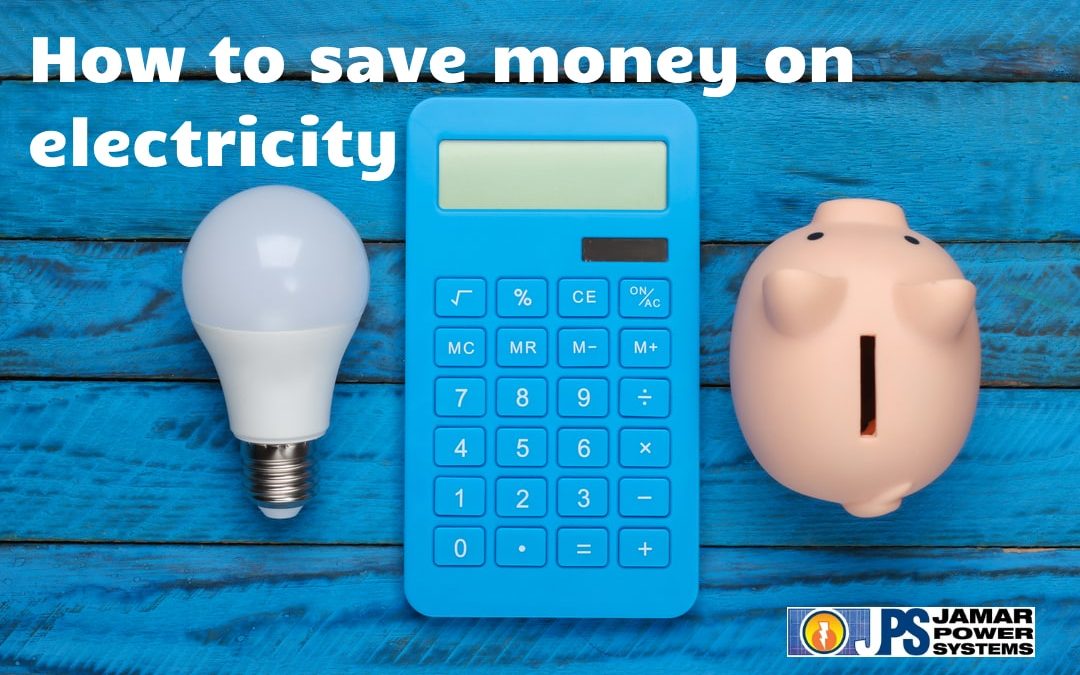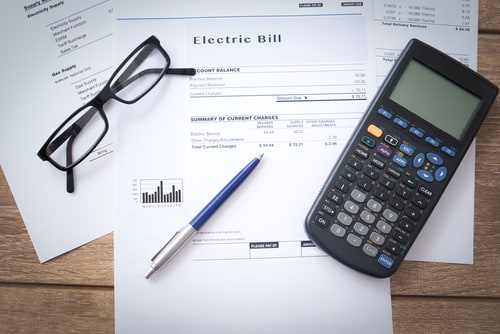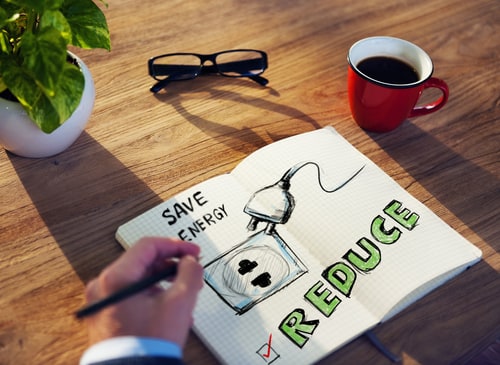Tips on how to save money on your electric bill
Ask 100 people if they’re interested in saving money, and your chance of finding anyone who will tell you “No” is almost non-existent. But ask those same 100 people for 20 ideas about how to cut their monthly utility bills, and you might receive a few good ideas along with a lot of blank stares or head-shaking.
The truth is that most of us don’t think about how much electricity we consume or its cost until we get those monthly bills. Even if we do, it is often easier to groan and grumble and pay than to take steps to change old habits.
But, if rising costs, extreme weather, and more frequent power outages due to grid overload have gotten your attention recently, you might be among the growing number of people who are determined to make some changes.
We often take electricity at home for granted — to operate the lights, cook meals, wash dishes and clothes, heat the water for our showers, provide entertainment, keep our homes safe and charge all our digital devices.
If it were possible to save 10 percent on your annual electrical bill by making only a few adjustments to your routine, would you do it?
What if, by lowering your appetite for more electricity each money, you could not only save a little money each month but also ease the strain on regional power grids? Is that enough incentive to change your habits now?
If you could ensure that the air conditioning will continue to keep you cool during the hot summers or guarantee that the heat would stay on when next Winter’s storms hit, would you act?
What about making a dent in consumption to help the environment?
If so, take note of the following statistics:
- According to the U.S. Census Bureau, there were approximately 132 million by the end of 2021.
- The average American household consumes 11,000 kilowatt-hours of electricity each year.
- The average cost of power for all 50 states is 13.19 cents per kilowatt-hour, ranging from a low in Louisiana of 9.37 cents per KWh to a high of 32.76 cents per KWh in Hawaii.
The averages are, of course, slightly misleading because rates can vary substantially from one location to another within a single state; rates are also affected by season, demand, market disruptions, and whether a market is regulated or deregulated.
However, even based on simple math calculations, a 10% savings would have an enormous impact.
What costs the most on your electric bill?
According to information supplied by utility companies, heating and air conditioning require the most significant electricity use for an individual home, slightly more than half of the total consumption by a residential user.
Water heating is the next highest category, about 19% for individual homes and a higher percentage of the total consumption for multi-unit apartment buildings.
Lighting and refrigeration for most homes and apartments constitute 9 or 10% of the total, and all other uses — including cooking, laundry appliances, television, and other electronics, account for about a 21% share. Again, seasonal variations, the number of family members, and regional rate variations affect consumption.
What can you do right now to lower your electricity bills? Here are some practical ways to do just that.
Take stock of your home and your habits
To save money, you will want some idea of how you currently spend money on electricity. Compare your last several electricity bills and study them to determine average costs based on the statistics above. Calculate your “average expenditures” for each of the categories each month. Then conduct an informal “energy audit” of your home.
It needn’t take much time, and you should gain some understanding of where your dollars go each month. If, for instance, winter bills are substantially higher than they are the rest of the year, concentrate on how to improve your home’s heating system.
Consider adding insulation or replacing single-pane windows if your heating cost seems exceptionally high.
Think about hanging heavier draperies in the Winter.
Install a programmable thermostat, and lower the daytime temperature setting to 68 degrees and lower at night.
Sleep under an extra quilt and wear sweaters and socks during the day.
If you have ceiling fans already, you may be able to reverse the blades and use them to circulate warmer air throughout a room.
Remember the old refrain: “Shut the door!” Follow that rule both summer and Winter to help maintain the inside temperature at the setting you prefer, and open the windows to benefit from cooling breezes and better air when you can.
Plant deciduous trees on the sunny side of your house to provide shade in the summer. They’ll lose their leaves in the Winter to allow the Sun’s heat when you need it.
Utility companies in many locales will also conduct a more thorough audit to help you reduce consumption.
In some areas, power companies partner with private firms to inspect ductwork and upgrade insulation in older homes — sometimes free of charge to the homeowner. It’s a win-win for the companies and results in less drain on the power grid during storms and extreme weather events.
In San Diego, SDG&E offers an online energy audit that provides energy savings suggestions based on your needs and habits.
For businesses, SDG&E has an energy audit program also. Download their PDF for more information.
Does unplugging things save electricity?
The simple answer is yes. Ghost energy consumption, sometimes called idle current or even vampire power, is real.
Leaving standard appliances like toasters, coffee makers, printers, televisions and stereos, even toothbrushes, hairdryers, and charging cords plugged in when not in use still allows power to flow through the circuits, and the dollars add up.
Standby mode on electronic devices is a big offender of using ghost energy.
While no one suggests that you should unplug every lamp in your home that isn’t turned on, it’s wise to be mindful of the cost of wasted power. You could easily save $60 to $120 a year, according to reliable estimates.
There are modern ways to avoid such waste and lower your annual costs:
- Plug multiple small kitchen and bathroom appliances into a power strip that has an on/off switch;
- Use a Smart Strip to automatically detect which items are not being used and cut power to those after a specific time. They’ll also immediately allow usage when you turn on a device or appliance.
- Forego the convenience of sleep mode on computers and digital devices, and spend the additional seconds to power them down completely when you’re through with a session. Batteries will last longer on laptops and portable devices, and the time it requires to power up a computer is minimal.
Technology Is Your Friend
As you consider the best ways to save money on your monthly electric bill, look at all the ways you use electricity.
Modern technology has brought about sweeping changes in appliance efficiency. Energy Star labels promise quieter and more efficient operations.
If you have aging appliances, it may be time to replace them; style, efficiency, and convenience go hand in hand with lower bills.
Don’t use the oven on your range if instead you can cook or heat food in an air fryer, toaster oven, or microwave.
Wash clothes in cold or warm water rather than hot, and wash large loads whenever possible rather than several small loads.
Replace old faucets with modern scald-free models; they’re not only safer for children and seniors, but they will save you money as well.
Reduce the temperature setting on your water heater; a temperature of 140 degrees is more than hot enough for regular household use.
If your water heater is due for replacement, consider installing a tankless water heater for added efficiency and lower energy costs.
Set refrigerators and freezers to the manufacturer’s recommended temperatures. Remember that freezers operate most efficiently when full, but items on refrigerator shelves should have air space around them.
Adjust your habits whenever possible to take advantage of lower rates during off-peak hours; running your dishwasher at night might add up to significant savings. Only run the dishwasher when it’s fully loaded, and use the air-dry setting than high heat drying.
Replace incandescent bulbs with lower wattage LED or compact fluorescents; they are newly improved, offer more natural light, and although they are most costly initially, they last longer.
Replace landscape lighting with solar yard lights, and install motion detector fixtures on your home’s exterior and in the garage.
Consider voice-activated lighting or motion detectors in dark hallways or on stairs.
If you have smart home technology, utilize the features that make life more convenient and use them to moderate your electrical consumption. Try to strike a comfortable balance.
For additional ideas, contact your local utility company; most have a wealth of energy-saving tips that will lower costs to you, the consumer.
To lower your utility electric bills drastically and eventually nearly eliminate them altogether consider using solar power to generate your electricity.
To get an idea on how many solar panels you’ll need, how much it will cost, and how much you’d save, use our FREE San Diego Solar Calculator.
Sources:
https://www.electricchoice.com/electricity-prices-by-state/
https://www.eia.gov/energyexplained/use-of-energy/electricity-use-in-homes.php
https://financesonline.com/number-of-us-households/
https://www.eia.gov/energyexplained/use-of-energy/homes.php
https://www.energy.gov/energysaver/estimating-appliance-and-home-electronic-energy-use
- 2025 Federal Tax Credit Changes For Solar Panel Systems & Solar Batteries - July 8, 2025
- How Solar Batteries Work - March 4, 2024
- Solar Battery or Generator for Emergency Backup Power? - January 30, 2024





